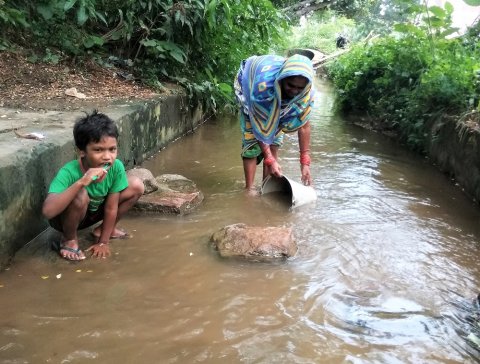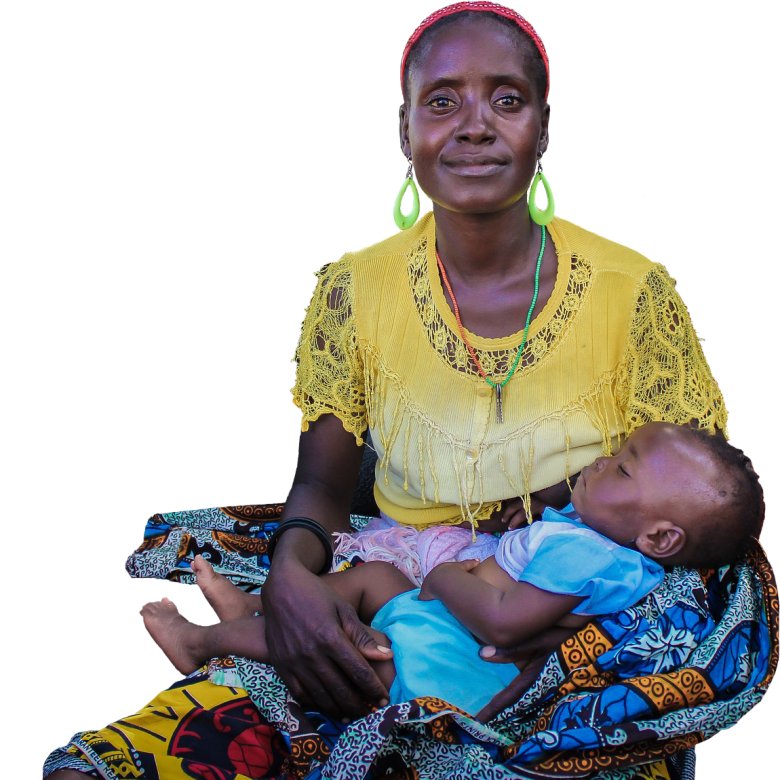Five reasons why we must invest in water, sanitation and hygiene for improve health

There are just 7 years left until 2030. This World Water Day is an important opportunity to unite around water and accelerate progress together by calling on governments to step up progress on prioritising water, sanitation and hygiene (WASH). Arielle Nylander and Helen Hamilton from WaterAid explain why WASH is an essential mechanism for improving public health and safeguarding against future health crises.
Improving WASH in communities and public settings, such as healthcare facilities, is a powerful investment — not just for health systems resilience and healthier populations, but also for care that is compassionate, dignified and inclusive. In short, it’s one of the best buys in public health.
1. WASH can end deadly disease outbreaks such as cholera
Over the past year, we’ve seen a staggering global cholera crisis with outbreaks in 31 countries. This devastating trend is reversing years of declining infections - 13 countries which reported no cholera in 2021 experienced outbreaks in 2022. More concerning, many of these countries had been cholera-free for years – and some even decades. Climate change is now recognised as a major contributing factor in the resurgence of this deadly disease – driving outbreaks that are increasing in severity and number.
WHO Director-General, Dr Tedros Adhanom Ghebreyesus, told the WHO Executive Board: "We have now raised the global cholera crisis to a grade three emergency, the highest level in our internal grading system, due to the high case fatality, the potential for further spread and severe limitations in vaccine supply."
Like COVID-19, current cholera outbreaks in over 26 countries underscore the urgent need for governments to invest in access to water, sanitation and hygiene services to protect and improve public health. These improvements would not only serve to control cholera. They would also help to stop the spread of a range of other waterborne diseases, such as diarrhoea.
WaterAid’s work to control and prevent cholera outbreaks includes work with governments and partners to improve the collection of WASH data for cholera surveillance; to ensure sustainable WASH is central to National Cholera Plans; and to improve water quality management.
Water and sanitation and hygiene represent the only long-term solution for ending cholera. While oral cholera vaccines have played an important role in bridging short-term and long-term efforts, the well-documented vaccine supply issues have reiterated the need to immediately strengthen sustainable water and sanitation services.
2. WASH protects health workers
WASH is vital for health workers' safety. Health crises such as Ebola and COVID-19, as well as the current unprecedented global cholera crisis, have further emphasised what we have long known — there can be no safe working environment for health workers without WASH. As Dr Tedros Adhanom Ghebreyesus, Director General of the World Health Organization has said, “Working in a healthcare facility without water, sanitation and hygiene is akin to sending nurses and doctors to work without personal protective equipment.”
Lack of adequate WASH services in facilities places healthcare providers at increased risk of healthcare-associated infections, undermining their safety, motivation and ability to do their job well in a clean and safe environment. This can contribute to the challenge of retaining staff, particularly in rural areas.
Women comprise 70% of the world's healthcare workers, making the lack of WASH in healthcare facilities an issue of women’s right to health and safety. Women also have distinct WASH needs, including to manage their periods hygienically and with dignity. Promoting health worker safety through access to WASH directly contributes to eliminating discriminatory work practices and the empowerment of women, as well as safer care. The safety of health workers therefore directly impacts the safety of patients.
3. WASH is what women want
When the White Ribbon Alliance asked women from 114 countries about their top demands for maternal healthcare, they received 1.2 million responses with a clear message: after respectful and dignified care, women’s second highest priority was WASH. Women want safe, dignified care — and that includes having health facilities with running water, private toilets, and clean beds and sheets.
Clean care in healthcare facilities is both lifesaving and essential to improving women’s empowerment and experience of healthcare, especially during pregnancy and childbirth. Every year up to one million mothers and newborns die because of preventable infections linked to unclean births. Having WASH facilities readily available in healthcare settings dramatically improves reproductive, maternal, adolescent and child health. Practising straightforward hygiene during antenatal care, labour and birth reduces the risk of healthcare-acquired infections, sepsis and death for infants and mothers.
Lack of WASH in healthcare facilities contributes to significant patient dissatisfaction and stops women from seeking maternity care, raising the risk of poor health outcomes for mothers and babies. Improving WASH in healthcare facilities should be prioritised as a means of tackling healthcare-acquired infections, as well as improving patient satisfaction and encouraging timely seeking of care.
4. WASH combats slow moving pandemics such as antimicrobial resistance
Healthcare-associated infections are on the rise globally, as is antimicrobial resistance (AMR). The first major global analysis of the impact of AMR estimates that resistance itself caused at least 1.27 million deaths in 2019. This demonstrates that AMR is a global health threat, with the highest burden and worst impacts seen in low- and middle-income countries where access to clean water, sanitation and hygiene services is lowest.
A core element of safe and quality care is hygienic practices and environment. Healthcare-associated infections are a clear marker of inadequate infection prevention and control. Childbirth is risky, and babies do not have fully developed immune systems – especially if they are premature – so are more susceptible to illnesses, either from infections their mother may already have or from infections contracted in hospital.
Prophylactic use of antibiotics to counter the high risk of infection due to inadequate WASH is a serious issue. For example, in India and Bangladesh, a study found that 13 of 15 maternity units, public and non-public, routinely administered antibiotics to all labouring women, irrespective of whether they had a normal or complicated delivery. Relying on antibiotics to do the job of effective infection prevention and control and WASH is costing us dearly: overuse and misuse of antibiotics undermines measures to control drug resistance worldwide. Improving infection prevention and control and WASH is a proven cost-effective solution to reduce healthcare-associated infections and decrease the need for antibiotic use.
5. WASH is a no regrets investment
Inadequate access to WASH is responsible for as much as 10% of the global disease burden, contributing to 1.6 million preventable deaths each year, including 60% of all diarrhoeal deaths. Investing in basic water sanitation and hygiene services can provide up to 21 times more value than expenditure, and is a necessary step towards universal safely managed services; Upgrading basic services to safely managed WASH infrastructure is a long-term investment that will yield net benefits of US $37–86 billion per year (Figure 1), avoiding up to 6 billion cases of diarrhoea and 12 billion cases of helminths between 2021 and 2040, with significant implications for child health and nutrition;
With decisive action, this story of lack of access to WASH in healthcare facilities can change within a generation. We know the estimated cost of achieving universal access to WASH in existing healthcare facilities in the world’s 46 least developed countries is around US$9.6 billion. It would only take an annual commitment of around $600 million in external financing and a domestic commitment of around $355 million to make WASH available in every healthcare facility in these 46 least developed countries. These investments would not only yield benefits of up to 16 times their value and start paying for themselves within just one year, but would also reduce the burden of unpaid work on women and girls, strengthen health system resilience and boost economic growth. In our new report, WASH: a foundation of strong resilient health systems, we highlight practical examples and actions to strengthen systems for WASH in healthcare facilities.
Water, sanitation and hygiene are pillars of public health and dignity — we can prevent pandemics with them, and they can save a mother’s or a child's life. Investing in WASH in healthcare facilities and homes contributes to tackling AMR and reducing infections, and enables health workers to focus on patient care rather than collecting water to prevent the spread of devastating diseases. Clean hands save lives; WASH in healthcare facilities is imperative to achieving health for all.
